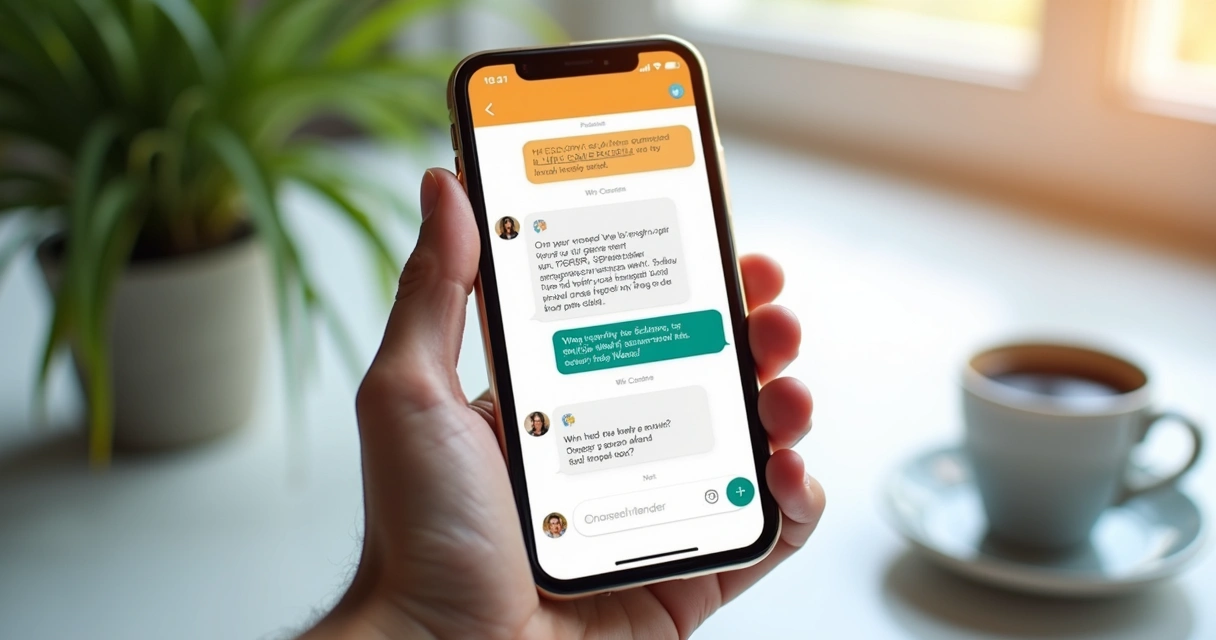I can still remember my first encounter with an automated service on a website, years before AI-powered conversations became common. It started clumsily. Press 1 for this, 2 for that. Most people, including me, grew frustrated, pining for a real human. Today, however, I see a completely different scenario. Talking to a virtual assistant can feel so natural that, at times, you may not notice you’re not chatting with a person. With more than a decade and a half working with digital solutions and artificial intelligence, like I do at Adriano Junior, I’ve watched conversational robots grow from awkward scripts into sleek problem-solvers. In this article, I’ll walk you through why these digital assistants have become essential supporters of staff and customers—and how they’re changing the way businesses operate.
What is a chatbot? Understanding the basics
A chatbot is a computer program designed to simulate conversation with human users, usually via messaging interfaces, websites, or apps. These conversational tools respond to input in natural language, helping people solve problems, answer questions, or perform tasks. They often sit quietly in the corner of a website, waiting for someone to say “Hello? I need help.” Unlike traditional software that relies on clicking through pages, a conversational agent creates a back-and-forth exchange that feels more personal.
Some businesses use these assistants to guide customers through common service questions. Others deploy them internally to help employees book meeting rooms or fill out HR forms. The range of applications keeps expanding as technology advances and expectations change. In my experience, the most impressive use cases often mix automation with a touch of human oversight.
Automated conversations can feel astonishingly real.
The two main types: Rule-based and AI-powered systems
Not all conversational agents are created equal. Over the years, I’ve worked with two fundamental types:
- Rule-based chatbots: These follow a pre-defined decision tree. They present users with specific choices (“Do you want to schedule an appointment or check account details?”), and respond with predefined scripts. These are simple, fast, and reliable for specific, repeatable tasks.
- AI-powered chatbots (Conversational AI): These use advanced natural language processing (NLP) and machine learning to “understand” more complex queries, even when phrased in various ways. They can learn from interactions, improving over time. Some modern assistants now employ generative AI to offer even more nuanced responses.
I’ve learned that the best type depends on the problem you want to solve. Some companies benefit from a precise, rules-based flow, while others thrive with adaptive, AI-powered conversation partners. There’s no universal solution. In practice, hybrid models combining both approaches are gaining popularity.
 How conversational AI and NLP unlock natural conversation
How conversational AI and NLP unlock natural conversation
People expect smooth, responsive interactions—no matter if they’re dealing with a human or a machine. At the heart of this innovation is something deceptively complex: the ability to “understand” language as we use it.
What is conversational AI?
Conversational AI combines language models, machine learning, and pattern recognition to allow computers to process, understand, and generate responses in human language. If you’ve chatted with an online support agent that “gets” what you’re asking for, you’ve likely seen conversational AI in action.
Using sophisticated algorithms, these systems can identify intent (“I want to check my balance”), extract entities (the numbers, names, or dates in a sentence), and then respond appropriately. Over time, they can even adapt, learning from past interactions to offer more relevant answers.
Natural language processing: The real engine
NLP is the foundation. It takes raw text or spoken words, breaks them into components, analyzes meaning, and determines context. When a customer writes, “Can I change my shipping address?” the system parses the question, recognizes the request, and triggers the right workflow.
- Intent recognition: Identifies the purpose of the message.
- Entity extraction: Finds the important details.
- Dialogue management: Decides what to do next—ask a question, provide information, or escalate to a human.
Good conversational AI, powered by NLP, creates interactions that don’t just “feel” real—they solve real problems.
Machines that understand nuance can answer questions with surprising accuracy.
Real business applications: Automation in action
When businesses turn to digital assistants, it’s usually because they’ve spotted repetitive tasks that drain time and money. Why have people answering “Where’s my order?” 50 times a day when a script could handle most of those queries instantly? Here are some places where I've seen automation shine.
 Automated customer support that actually helps
Automated customer support that actually helps
One of the earliest and most common uses is replacing or reducing the workload of call centers and support desks. As cited in a study by the National Center for Biotechnology Information, conversational agents can handle approximately 75% of typical post-sales inquiries in industries like tourism. That’s not trivial.
By automating answers to common questions, conversational agents give customers answers faster and allow businesses to handle high volumes without increasing headcount. For customers, there’s less waiting in line. For staff, fewer repetitive queries to answer.
- Order tracking
- Return and refund requests
- Product troubleshooting
- General FAQs
What impresses me is that automation doesn’t just “replace” human conversation—it often raises service standards by giving instant responses. Customers who want to talk to a person still can, but they spend less time queued up for simple matters.
Appointment scheduling and reservations
Few things make people as impatient as filling out forms or waiting for a response about appointments. This is another area where I’ve seen conversational assistants excel.
- Healthcare: Scheduling doctor visits without a phone call
- Hospitality: Booking rooms or tables in seconds
- Personal services: Reserving salon slots, lessons, or equipment
No phone tag—just pick a time and go.
Increasingly, these systems integrate with existing calendars or booking software. That way, double-bookings are avoided, and schedules stay up-to-date, saving headaches for both customers and businesses.
 Sales, lead generation, and e-commerce conversion
Sales, lead generation, and e-commerce conversion
Conversational agents aren’t just reactive. Some of the most valuable applications are proactive: qualifying website visitors, directing them to relevant products, and capturing sales opportunities.
- Answering product questions
- Guiding users through configuration or pricing tools
- Offering personalized recommendations
- Collecting contact details for follow-up
I’ve helped companies deploy solutions that pop up when a customer hesitates on a shopping cart page or leaves a configuration tool unfinished. The ability to “nudge” people at the right moment often means more completed transactions and satisfied buyers.
Internal process automation: IT and HR
It’s not just about customers. Automating employee support brings real gains, too:
- Quick password resets or access requests
- Filling out leave or expense forms
- Answering policy questions
- Providing onboarding information
Automated internal assistants free up IT and HR teams, speed up answers, and help employees get back to what matters. In my own work, I’ve seen this lead to not just faster results, but happier teams with fewer distractions.
A good digital assistant is always awake and ready.
 Transforming business operations: Practical use cases
Transforming business operations: Practical use cases
It’s easy to think of these assistants as “just for customer service,” but their role is expanding. Based on the types of challenges Adriano Junior tackles, I’ve seen businesses using automation in creative ways.
Automating onboarding and training
Onboarding used to mean sitting through endless presentations. Now, digital solutions guide new hires step by step:
- Delivering tailored welcome messages
- Assigning and explaining training modules
- Answering “who-do-I-ask” questions
- Checking completion status and providing reminders
This automated guidance gives new employees a smoother start, while reducing HR’s burden. It’s one less thing for busy managers to handle, and it keeps everyone in sync.
Assisting in compliance and policy management
Regulatory requirements change all the time. Busine...
